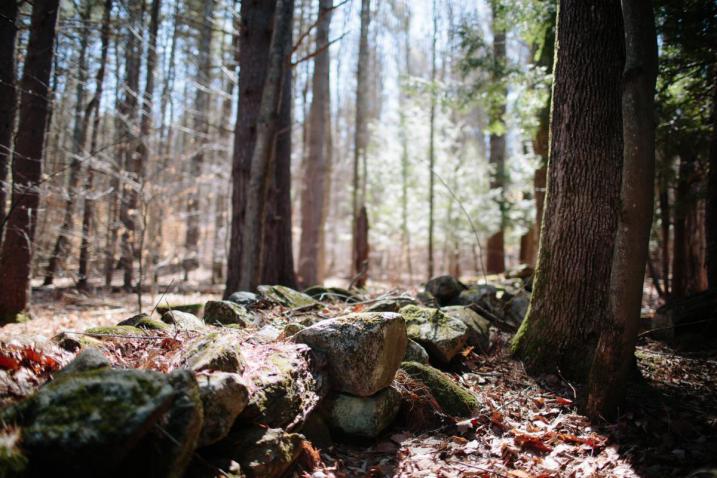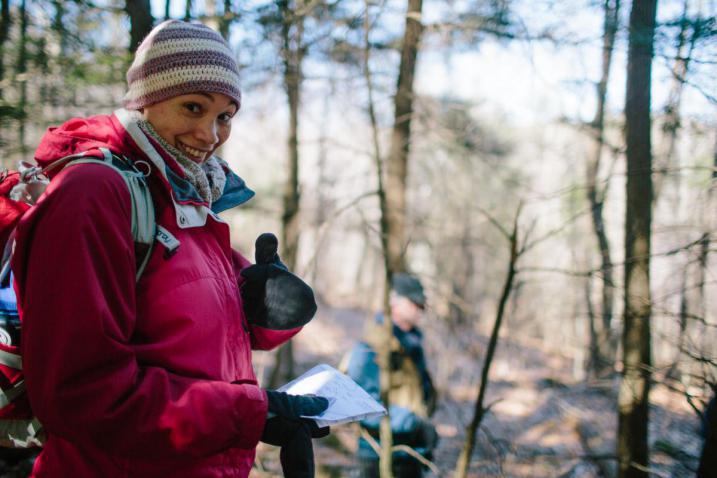Stewardship Tip: 5 Reasons Volunteer Easement Monitors are Stewardship Superstars

As more forest lands, water resources, recreational areas, wildlife habitats, and agricultural resources become conserved through conservation easements, more stewards will be needed to help monitor these areas to ensure they're protected forever. Volunteers play a crucial role in this effort and the work that they do should not go unnoticed. Let's explore 5 reasons volunteer easement monitors are stewardship superstars!
1. Every year, volunteers monitor hundreds of thousands of acres of conservation land
Easement monitors schedule visits with landowners, walk property boundaries and interiors, and make detailed reports of their findings. These yearly duties help ensure that the terms of conservation easements are being upheld. This is no small task and their efforts are critical for maintaining the legal standing of conservation easements in perpetuity.
2. Volunteer monitors closely review conservation easement documents
A conservation easement isn't just the physical land on the ground. Each easement is documented in great detail in a variety of ways, and it's a volunteer monitor's job to familiarize themselves with each easement and know the ins and outs of its history. Easement monitors will routinely review an easement's baseline documentation, which is a report of the conditions of the land at the time the land was conserved, and the easement deed, which defines all the terms of the easement. They also look closely through previous monitoring reports, review aerial maps, survey maps, and past photos of each property. This diligent review is important because it will help the easement holder (often a land trust, town, or other government organization) identify potential problems and violations quickly.
3. Volunteer monitors are conservation documentarians
It's the job of volunteer easement monitors to document their observations of the conservation land and make note of any changes in land use or management. They make detailed notes and take photographs of any concerns. They also have to make sure to treat all information as private and confidential. That is a lot of responsibility for volunteers and through this process they truly learn to hone their observation skills.
4. Volunteer monitors build important relationships with landowners
This is especially important as private ownership of conservation lands changes hands and is passed on to a new generation of landowners. Volunteer monitors spend a lot of time getting to know landowners and asking them questions about things like the history of the land, planned land management, and observed changes in the land. They also serve as a resource to landowners and can refer questions to their land trust or town. Volunteers never need to attempt any direct mediation or enforcement action related to the easement. They simply relay messages and get to inspire and be inspired by the stewardship of the landowners!
5. Volunteer monitors keep themselves and others safe in the field
The job of volunteer easement monitors is not just about the conservation easement itself. Easement monitors spend a lot of time outdoors and off-trail in a wide variety of landscapes. They have to stay alert and aware of hazards in the field. Often volunteers walk properties alongside landowners and need to execute their best judgement with safety. The reports they make also affect volunteer monitors that come after them. A helpful safety note about hazards on the landscape (like cellar holes, wildlife sightings, or poison ivy patches) can help monitors in the future seek alternative routes and avoid problems.
For more information about conservation easement monitoring for volunteers, check out our free volunteer handbook and training guide.
Photos were taken at an Easement Monitoring & Outdoor Skills workshop for volunteers in Canterbury, NH. See more photos from the training on our Facebook Page!




